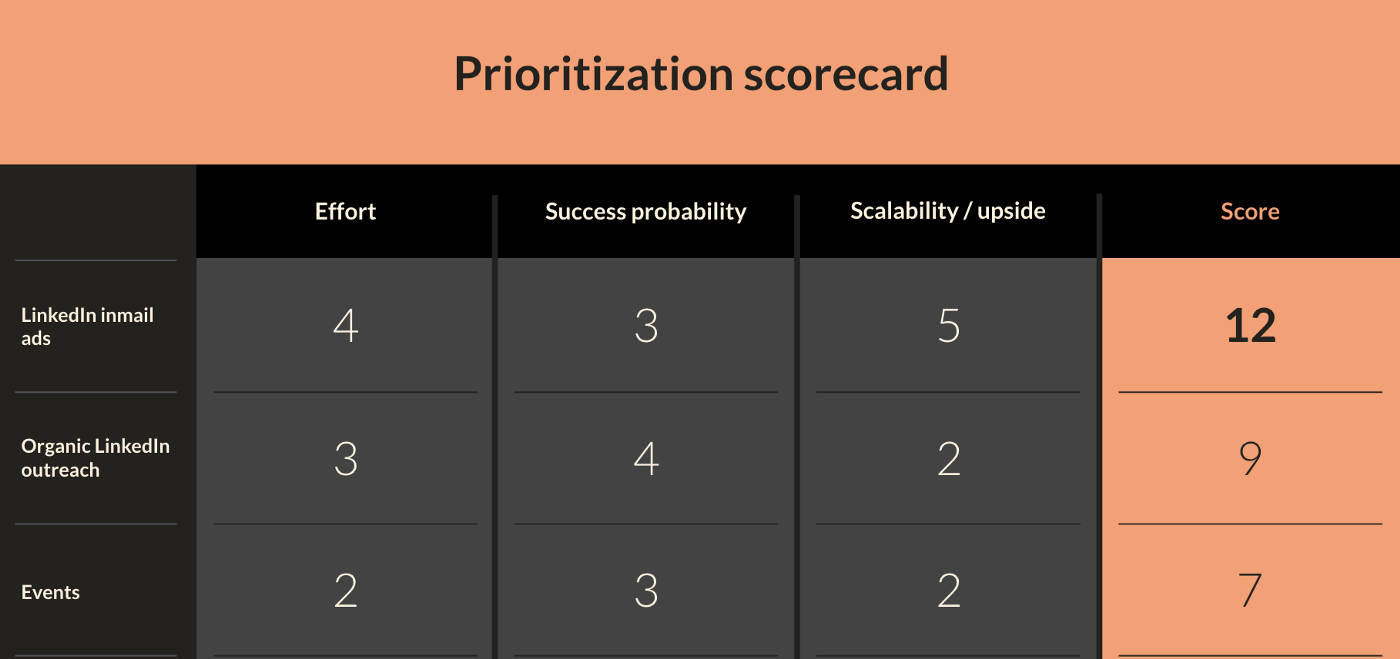Test iteration: core process of growth hacking

Think of a modern company that everyone knows.
Most likely companies like Facebook, Twitter, Youtube, Dropbox, and Airbnb came to mind.
What do all these ultra-successful companies and “growth machines” as Neil Patel refers to them have in common? They have used growth hacking strategies to create loyal and raving fans while raking in billions of dollars.
Your startup can also achieve similar results.
Perhaps, you have even tried to implement growth hacking time and again but to no avail. Several startups, particularly early-stage startups, often face a similar dilemma. But not to worry.
In this article, I will show you how to make growth hacking work by reducing it to its barebones: test iteration.
Let’s dive in.
Finding the scalpel
If you’re implementing growth hacking, you’ll know that it’s not all unicorns and rainbows. More often than not, growth teams bend over backward to find ideas and strategies that will work for a specific audience.
As Ryan Holiday writes in his revered book titled Growth Hacking Marketing, “Instead of bludgeoning the public with ads or dominating the front page of a newspaper to drive awareness, they [Growth Hackers,] use a scalpel, precise and targeted to a specific audience.”
And that’s what growth hacking is about: finding the scalpel(s). It’s what Jack Welch, former chairman and CEO of General Electric, calls the “aha idea.”
For Dropbox, it was chiefly about building a referral program into the onboarding of new clients. For Airbnb, it was a combination of piggybacking off Craigslist and improving the photo listing on their sites. It may be different for you.
You’d need to keep exploring and tweaking and testing your strategies until you find the goose that lays the golden eggs.
Even if you can’t do what Pardeep Goyal did in running ten experiments in six months, you should be a prolific tester nonetheless. The more you test, the faster you find marketing strategies that work, and ideally, your weekly test cycle should include the following:
- Hypothesis
- Prioritization
- Test
- Analysis
Let’s go through each of these stages and explore how to make the most of each step.
Hypothesis
If you already have data to analyze, you can start from analysis. If not, hypothesis is your first step to hop into a growth loop.
In this stage, you have to garner ideas that are worth experimenting. You’ve probably heard about the “deja vu” moment where an idea or solution suddenly clicks. However, to maintain a sturdy stream of worthwhile insights, you can’t bank on the occasional “lightbulb” moment; you need to create a pipeline for ideas.
Start with a goal
It’s easier to come up with ideas when there’s a clear-cut goal in place. By clearcut, I’m referring to targets that are bite-sized and achievable. Let’s say Company X is looking at increasing its profits. That aim is too broad and will require some simplification. On the other hand, increasing its monthly active users (MAU) is relatively easier to zero in on and to achieve. Such a goal is clear and easy for everyone to follow.
Once you’re crystal clear on the problem(s) you want to solve, set up a team to conduct targeted thinking. Granted, you can task an individual to bring up ideas, but you’re likely to reap better results with a group.
And if you want to up the tempo, you can do what developers often do at hackathons. One problem is assigned to different teams to solve within a timeframe, and the team with the best solutions receives rewards. Conducting such brainstorming sessions can increase competition and drive ideas. Check out this article over at the entrepreneur about creating healthy competition amongst employees.
Train your team to be good at coming up with new ideas
As we mentioned earlier, ideas don’t always come out of the blue. There’s a science to curating the best ideas. Teach your teams to:
- Observe: Keeping an eye out on your products’ reactions and others is bound to yield some insights
- Question: Nothing pokes at a good idea like the right questions
- Associate: Think outside the box and make connections
- Network: There’s always something to learn from other growth professionals
Training your team to be conscious and harness these pointers is bound to yield results. Make sure you record each idea. You can use Trello or a simple Google Spreadsheet to store the ideas.
Prioritization
“Business ideas,” according to Richard Branson, “are like buses: there’s always another one coming.” If you don’t have a plan to sift through and rank the ideas that come up, you may never make progress in your growth hacking.
Human biases often cloud judgment. You can easily overestimate or underestimate the potential of an idea, and that’s why a system of prioritization is crucial. Often a quantitative measure, where you can assign a score to each idea, is the best approach as it reduces the probability of biases to a large extent.
There are several strategies to prioritize your ideas quantitatively. Generally, there are two types of scorecards: one-dimensional and two-dimensional scorecards. A one-dimensional score card aggregates scores for three metrics: effort (low effort is obviously better), success probability, and scalability / upside. Take a look at how a 1-dimensional scorecard for lead magnet sign-ups would look like for Company X.

Once you settle on the best idea to try out, come up with a hypothesis statement. A hypothesis statement for Company X could look like this:
If this experiment is successful, sign-ups for the lead magnet will increase by 50% because we have noticed that for every 1 out of every 5 LinkedIn inmail visit, signs up for the lead magnet.
Testing
Once you cut through the clutter and find the north metric that you should explore, you can design and run an experiment. Of course, not all tests are successful or yield the desired results. Less than 25% of all trials deliver successful and actionable results.
But that does not mean you should not conduct experiments. Most of the failed tests can be fodder to make better decisions on whether to double down on operations or rule them out completely.
The Minimum Viable Test
Chances are, you’ve heard about the Minimum Viable Test (MVT). If you haven’t, here’s a quick roundup for you. The MVT thrives on the concept of gleaning insights from a hypothesis using the least amount of resources. An MVT experiment must be efficient and valid to deliver the goods.
For instance, in the case of Company X, it may not have the budget to recruit thousands of potential clients in its experiment. The company may have to find a less resource-intensive method to conduct the same investigation. Perhaps, reducing the sample size may do. Alternatively, the company could select a section of already existing clients and run the experiment with them.
On the other hand, an experiment could be invalid owing to factors such as insufficient time, inadequate sample space, and outlier events like holidays. Unlike failed tests, invalid tests are useless and cannot be helpful. Ensure that all experiments pass the efficiency and validity tests.
Here’s a ready reckoner list of how to ensure your tests pass the MVT:
- Determine how much you’re willing to spend and create a budget
- Be clear on the sample space required for the experiment
- Encourage clients and potential clients to sign up for experiments
- Avoid running tests on outlier days such as holidays
- Make sure you have the analytics tools to measure and store data
Analysis
This stage is perhaps the most critical. And the reason is simple: if you’re not analyzing your experiments, you won’t be able to measure progress or streamline subsequent tests to yield better results.
Analytics helps companies make informed and data-driven decisions. For every experiment, you have to determine if the test was a success or failure. Also, you have to examine whether the results proved your hypothesis or otherwise. And ultimately, you have to find out what caused the experiment to succeed or fail.
In analyzing your results, you’ll need some tooling options. Ultimately, the software you plumb for will depend on the metric you are measuring. But here are some of the most common among growth hackers that you can choose from:
- Google Analytics is enough for the most of your acquisition activities.
- Google Spreadsheet with Supermetrics if you want to overview your spend easily and cost-effective.
- Kissmetrics is used amongst many hackers for behavior analytics. An excellent software for identifying blockage points and learning which metrics drive Return on Investments (ROI).
- But don’t forget that at early-stage, interviews, phone calls and surveys are better than nothing.
As Sean Ellis says, a growth hacker is someone whose true north is growth. In other words, you should be a stickler for growth and every aspect of your company — from customer service to marketing — should reflect that mindset.
If anything should be a weekly feature of your organization, it should be testing to finetune growth processes. In this article, we’ve explored four steps to doing just that. Use actionable tips and practical examples to turbocharge your business.
No spam, no sharing to third party. Only you and me.
